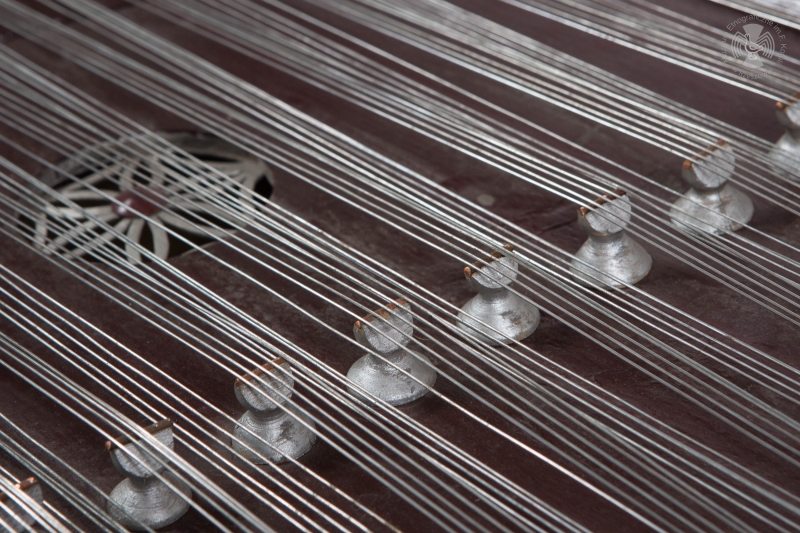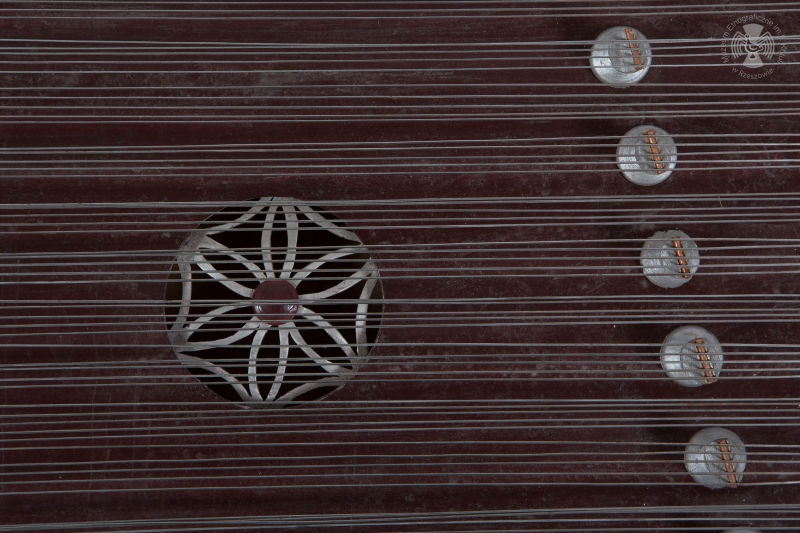dulcimer
Excerpt from the film Siła tradycji [The Power of Tradition], produced as part of the project "Muzyczny folklor Podkarpacia - badania terenowe" [The Musical Folklore of Subcarpathia - Field Studies], Franciszek Kotula Ethnographic Museum in Rzeszów, 2014
dulcimer
Classification: 3 Chordophones / 31 Simple chordophones or zithers / 314 Board zithers / 314.1 True board zithers / 314.12 With resonator / 314.122 With resonator box (box zither) / 314.122-4 True board zithers with resonator box (box zither) sounded by hammers or beatersMaker: Unknown
Date: before World War II
Village / Town: Grodzisk area
Region: Subcarpathia
Country: Poland
Owner: Franciszek Kotula Ethnographic Museum in Rzeszów
Inventory number: MRE 8021
Description: body in a trapezoid shape with moulded sides and wooden battens on the sides; two round resonance holes on the top plate; the top plate contains 19 string courses: 5 strings in each course, stretched between metal hitches and metal pegs (for tuning), supported by two rows of single bridges (10 and 10), each with a metal bar attached on top; melody strings stretched interchangeably with bass strings; melodic strings divided by bridges in a 2:3 ratio, due to which their left sections are pitched a fifth higher than their right sections; undivided bass strings; the instrument was played using two wooden mallets with round finger holes
Decoration: maroon-painted body; openwork resonance holes carved as rosettes; silver-painted bridges; varnished mallets
Measurements: 930 x 410 x 75 mm
Materials: wood, metal
Sound compass, tuning: variable, usually the lowest tone G – d, scale: from two (sometimes incomplete) to over four octaves
Performance practice: formerly an instrument of Jewish and Romany musicians, later folk musicians; it was played solo or in bands, particularly in the Vilnius area, Rzeszów area, and in Subcarpathia, where the dulcimer became the musical hallmark of the region after World War II; dulcimers from the eastern part of Lesser Poland are usually bigger and louder than those from the Vilnius area
Catalog card by: Jolanta Pękacz / Zbigniew J. Przerembski
<< Back













